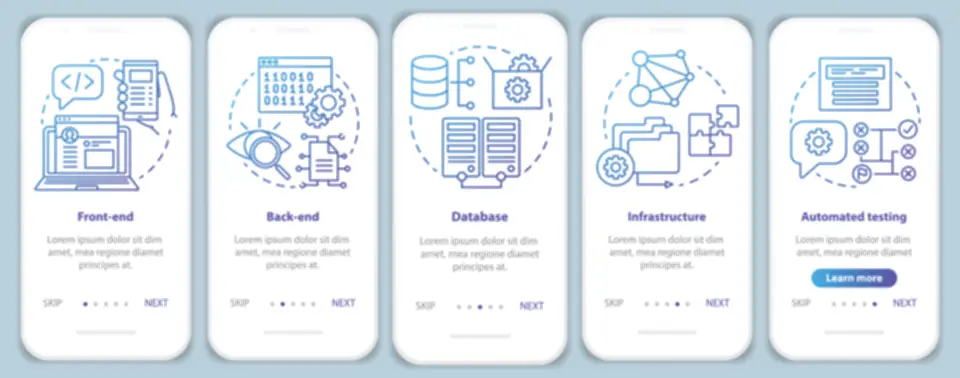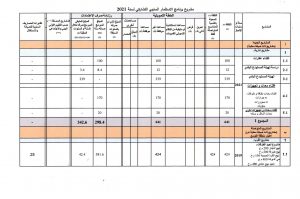They allow for the creation of continuous integration and steady delivery (CI/CD) pipelines, enabling teams to efficiently construct, test, and deploy purposes. Jenkins automates the method of constructing code, running tests, creating executable information, and deploying code to various environments. It integrates seamlessly with model control methods to trigger these processes automatically. Jenkins is essential in DevOps as a end result of its capacity to automate numerous stages of software growth, deployment, and delivery. Jenkins is extremely customizable & scalable, making it a flexible device that supports numerous use circumstances https://spasatel-mchs.ru/htmlz/15-7-snyatie-i-ustanovka-kondensatora-sistemy-kondicionirovaniya-vozdukha.html and simplifies the software improvement course of. It is a configuration tool that lets you outline your construct process with a sequence of plugins.

Devops And Multibranch Pipeline

At this level, nevertheless, we must always look at pipelines, which are enhanced workflows that are typically outlined by scripts. When you run Jenkins for the first time, it creates an administrative person with a protracted random password, which you’ll paste into its initial web page to unlock the installation. You can run the Jenkins WAR standalone or as a servlet in a Java software server corresponding to Tomcat.

Step 5: Configure And Execute A Pipeline Job Through A Direct Script
The Jenkins pipeline is provided as a codified script sometimes called a Jenkinsfile, though the file name can be completely different. Jenkins, as an all-around orchestration software, has many advantages when used for automation. This article will help you in understanding the Jenkins software intimately.

How Do I Debug Pipeline Failures?
They also facilitate the mixing of disparate branches of the code into a main branch. The Jenkins Pipeline is a user-made mannequin for the continual supply pipeline. The Pipeline incorporates various plugins that help outline procedure steps from model control to the customers. GitOps has a lot to offer developers who wish to automate their deployment processes using scripts which would possibly be stored as a single supply of truth in a version control management system. Such control and reliability are compelling causes to make the move.
The Means To Build A Jenkins Pipeline
- When you leverage Jenkins for CI/CD, automation ensures that there is much less number of errors in source code as Jenkins is specially programmed with the best practices and procedures to do so.
- Jenkins can routinely build the software program each time code changes are pushed to the repository and it could possibly also automate the method of testing the built software and reporting on construct results.
- If the problem persists, the staff must begin over and repair it.
- The very first thing the release stage does is check whether the local container registry is working.
Scripted and declarative are the two forms of Jenkins pipelines. When a DevOps engineer writes a Jenkins pipeline, they select either to create in the scripted syntax or the declarative one. Design patterns and Java Annotations for plugins are used to specify how the plugin is created, how it extends other plugins, and the way its person interface appears in Jenkins.
Developer Sandbox For Pink Hat Openshift
On the whole, a Jenkins Pipeline constitutes a series of steps. The Jenkins grasp can also execute the jobs instantly but it is all the time recommended to pick the appropriate agent(s) for build and execution-related duties. At the time of what’s Jenkins blog, it had near 1500+ plugins contributed by the community. Plugins assist in customizing the experience with Jenkins, together with providing help for accelerating activities related to constructing, deploying, and automating a project. Jenkins is an open-source server that’s written totally in Java.

If the problem persists, the team must start over and repair it. The word “continuous integration” or “continuous deployment” refers to the fact that that is an ongoing operation. Declarative pipelines take a extra structured, easy-to-visualize strategy. The Jenkinsfile format permits you to lay out pipeline levels, such as build, take a look at, and deploy, in a linear, sequential order. Each stage has a clear block defining what steps should occur inside that stage.
A Jenkinsfile may be written using two types of syntax — Declarative andScripted. Jenkins uses a DSL (domain-specific language) called Declarative Pipeline syntax. But you can begin with simple steps without learning the syntax instantly. Jenkins can generate and display check reports utilizing popular testing frameworks like JUnit and TestNG.
Yes, Jenkins integrates with most source code, construct, check, and deployment tools. But some custom configuration could additionally be required for clean integration. First, an automated build compiles the code and runs exams immediately. Developers regularly merge their code adjustments into the principle department.
Through trial and error, I’ve discovered that declarative pipelines are inclined to work finest for simple, widespread conditions where I need to automate a basic CI/CD workflow. When I want a clear, linear development from begin to finish without a lot of conditional logic, declarative pipelines allow me to define it concisely. However, for more complicated situations or conditions requiring extensive customization, scripted pipelines prove extra succesful. The ability to check code and generate complete reports is necessary. Jenkins, the automation server additionally shines within the area of testing and reporting.
This type of method is beneficial when you have to develop advanced and intensely massive software functions. Also, the microservices structure makes it attainable to quickly add new features to present purposes and produce them to market. Additionally, you can increase the release velocity of software program builds as a result of deployments in Jenkins aren’t depending on any personnel, corresponding to operator availability. Hence, the development and operations groups can reduce the stress of constantly integrating and deploying adjustments with Jenkins.

All the small print and intelligence about the deployment are outlined within the Jenkinsfile. A Jenkins Pipeline is a set of plugins that supports implementing and integrating continuous supply pipelines into Jenkins. Jenkins automation is usually triggered by code modifications in repositories like GitHub, Bitbucket, and GitLab, and integrates with build instruments like Maven and Gradle. Jenkins presents security instruments to help organizations maintain their knowledge and techniques protected, proper out-of-the-box. This consists of features like role-based entry management, session management, and encryption.
 العربية
العربية


